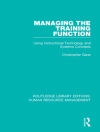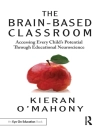‘This collection engages environmental, ethical and cultural values perspectives to show how Design and Technology (D&T) Education actively contributes to the significant educational goal of attaining sustainable global futures. An international collection of authors representing all levels of education articulate how D&T research, curriculum theory, policy, and classroom practices can synergise to contribute positively to the education of children for sustainable global futures. The book offers a spectrum of theorised curriculum positions, political and policy analysis, and case studies of successful school practice. A key word in the title is that of contribution which is construed in several senses: first, of D&T as a vehicle for understanding the range of political and social values that arise with such a major educational challenge; second, of D&T as an agent of critical and practical action for students as global citizens; third, by taking global and multiple perspectives (rather than, say, Western or mono-cultural positions); and, fourth, by demonstrating D&T’s capacities for working in holistic and integrative cross-curricular ways. The authors show how students can not only learn about their potential as humans-as-designers but can also develop designerly capacities that enable them to contribute meaningfully in practical ways to their communities and to wider society, that is, as global citizens who can apply design capability in ethical ways that are respectful of peoples, cultures and environments alike.’
Table des matières
SECTION 1; Introducing the Book; Environment: Contributions of Design and Education to the Sustainment of Planet Earth; Global Ethics, Sustainability, and Design and Technology Education; Culture in Design, Technology, and Environment: Refl ecting on Field Experiences; SECTION 2; In(di)geneity in Design and Technology Education: Animating an Ecological Cross-Cultural Conversation; Design and Technology Education for Sustainable Futures: In Preparation for Global Citizenship; Designing for Cultural Groups and Humanization: Two Ideas from Design Anthropology; Agency and Understanding: The Learner as a Sustainable Designer; Policy Formulation and Enactment: Linked up Thinking?; Against Neoliberalism; For Sustainable-Democratic Curriculum; Through Design and Technology Education; Sustaining Pedagogical Practice to Promote Productive Problem Solving: Lighting a Fire Rather Than Filling a Bucket; SECTION 3; Kartogrifa In-Flux: A Pedagogical Tool to Challenge Eurocentrism in Post-Complusory Education for Sustainable Design; A Case Study of Education for Sustainable Development: The Case of Design and Technology in Botswana; The Shoe Show: Using Simulation and Role-Play as Ways of Exposing and Questioning Learners’ Tacit Attitudes to Themselves as Ethical Consumers; With Head, Hand, and Heart: Children Address Ethical Issues of Design in Technology Education; Introducing Ideas of a Circular Economy; “We Have to Create a Way to Catch Flashes in Order to Get Electricity”: Creative Ideas in Children’s Perception of Climate Change; An Innovation Potential for a Sustainable Future; Sustainability + Fun = A Change in Behaviour: How Much Fun Is There in the World? Is It Finite? So, Should We Be Using More of It to Teach Students about Things that Are?; Opening up the Four Walls: Refl ections on Two South Australian ESD Projects; Author Biographical Notes; Index.












